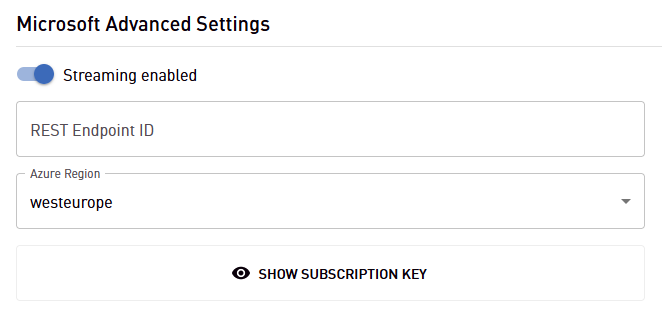CVG 1.27.0 (14-Feb-2023)
With our Valentine’s Day release, we want to make conversations with your bots even more pleasant for your customers. Therefore, we have improved the behavior of the bot when your customers interrupt it. On the other hand, the bot now understands your customers faster and can therefore also answer faster when Microsoft Speech-to-Text is used in the streaming variant.
We are curious what you and your customers think about this Valentine’s gift.

Improved Barge-in Behaviour
False barge-ins are a major annoyance in conversations with bots and virtual assistants: The bot’s announcement is aborted and the user’s voice input is evaluated, but it is irrelevant for the goal-oriented dialog and thus often leads to less than pleasant dialog progress.
Such false barge-ins can have various causes. Often, it is background noise that is then converted to text via speech-to-text, even though it was not speech (e.g., keyboard clacking becomes “yes”). And then there are also cases where the caller talks to another person during the bot announcement and not to the bot (”Thank you, this is a beautiful bouquet of flowers.”).
To avoid such false barge-ins as much as possible, CVG now offers you additional verification options:
Transcription Confidence: A minimum transcription confidence can be specified, so that a speech input is only considered for barge-in if the transcription confidence is higher. This can be used, for example, to prevent incorrectly transcribed background sounds leading to a barge-in.
Phrase List: only if one of the phrases of the phrase list is contained in the utterance the user utterance results in a barge-in. Side conversations of the caller (”That’s a beautiful bouquet of flowers”) thus no longer lead to a false barge-in (e.g. if the bot asked “Would you like to rent an SUV, a van, a sports car or a luxury car?”).
Additional optional API parameters for Barge-in
All endpoints with voice or audio output now have two additional (and optional) parameters to configure the minimum required transcription confidence and/or a phrase list needed to successfully verify a barge-in:
Extended Barge-in Options in VIER Extension for Cognigy
The nodes of our VIER extension for Cognigy that generate speech or audio output now have a separate barge-in section. Here, a confidence and a phrase list can be specified that is required to successfully verify a barge-in. The phrase list can be entered phrase by phrase or via a context variable (e.g. context.IVRphrases = ['complain', 'return', 'human']) which can be reused in different nodes. Both inputs are taken into account.
Reduced Microsoft Streaming Speech-to-Text Latency
To provide faster Speech-to-Text results when using Microsoft Streaming Speech-to-Text we have optimized our integration with Microsoft. Especially for longer speech inputs, this can significantly reduce transcription latency.
We have also adjusted the configuration for Microsoft Streaming Speech-to-Text. The Azure region can now be entered directly here. If no region is specified, westeurope is used by default.

Bugfixes
Event reordering in Cognigy Integration (DTMF Event arrives before initial Session Event)
We fixed the bug that an initial session event could receive in Cognigy after a DTMF event due to re-ordering issues in our Cognigy integration.
Dialog History Unfiltered
If you have access to multiple projects and viewed the dialog history of one, then the UI might have shown the histories of all your accessible projects instead of just the currently viewed project. This is now resolved.